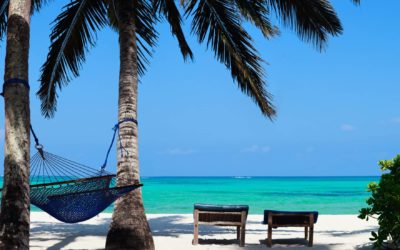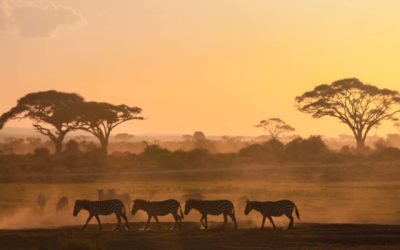Have you been wondering where exactly to go to witness the Great Migration in the Serengeti? You’ve come to the right place, let The Smiling Zebra team explain to you where the Great Migration takes place depending on the time of the year.
First, you should know that the Great Migration is not an exact science. It depends on the rains since wildebeest are looking for water and fresh grass. Their movements can vary from year to year, but thanks to the experience of our guides, they know how to predict the movements of wildebeest in the Serengeti National Park.
Where and when?
Here is an indication of the timing of the Great Migration but be aware that it can vary from year to year depending on the rains.
January: The animals participating in the Great Migration move to the south of the Serengeti, to the famous Ndutu Region. This area straddles the Ngorongoro Conservation Area and the Serengeti Park. Depending on the time of year you come, then we will advise you to stay on the Ngorongoro Conservation Area side or go to the Serengeti Park side. At this time of year, it is not necessary to go to the Serengeti Park to see the Great Migration.
In addition, the Ndutu area (Ngorongoro Conservation Area side) is the only place where your guide is allowed to drive off-road, allowing you to get up close and personal with the animals.
February: This is the peak of the migration in the Ndutu area. February is the calving season, i.e. the season of births. In Ndutu, it is a large plain with low grass, which allows the wildebeest to see the predators coming from far away. But the newborns are too weak to resist them and are therefore the main food of the predators at that time.
March: The newborns are now strong and ready to follow the Great Migration. There is almost no fresh grass at that time in Ndutu, so the animals must move again. They will head to the Maswa Reserve in search of fresh grass, while the heavy rains begin at the end of the month.
April/May: The rainy season is in full swing at this time of year. Migration is always in the Maswa Reserve, which is somewhat scattered throughout this area.
These are not the best months to go in search of the Great Migration because of the heavy rains that often make the trails impassable.
June: The rainy season is slowly coming to an end and the animals will start to migrate northwards through the central-western part of the Serengeti Park, especially along the Grumeti River.
July/August: Towards the end of July, the great migration reaches the north of the Serengeti, the Kogatende area. The animals will have to cross the famous Mara River to reach the Kenyan side. It is an incredible sight!
September: In September, the great migration is shared between the northern Serengeti and the Masai Mara in Kenya.
October: The animals return to the Serengeti Park and start to move down to the center of the park. This is the ideal time to combine a visit to Lake Natron with the great migration in the Serengeti.
November: This is a month of light rains. The animals are in the center of the Serengeti Park and will soon begin to move south of the park.
December: The migration is on the plains in the southern part of the Serengeti Park. The zebras start giving birth, and head to the Ndutu Region to look for the best grass full of good nutrients for the newborns.
So, has this article convinced you to go to the Serengeti to see the Great Migration? Don’t hesitate to send us an email at info@thesmilingzebra.com to plan your next trip to Tanzania!



